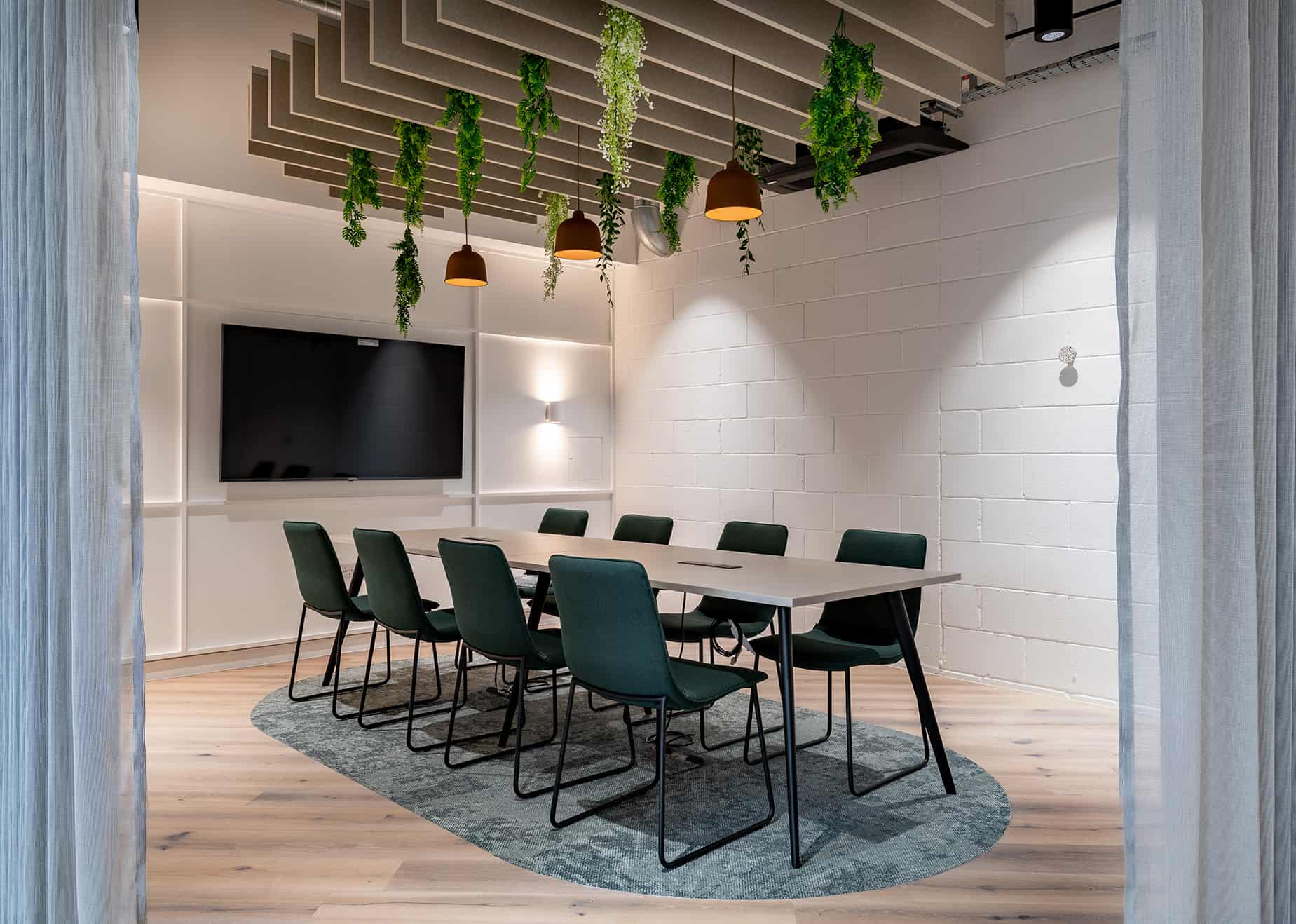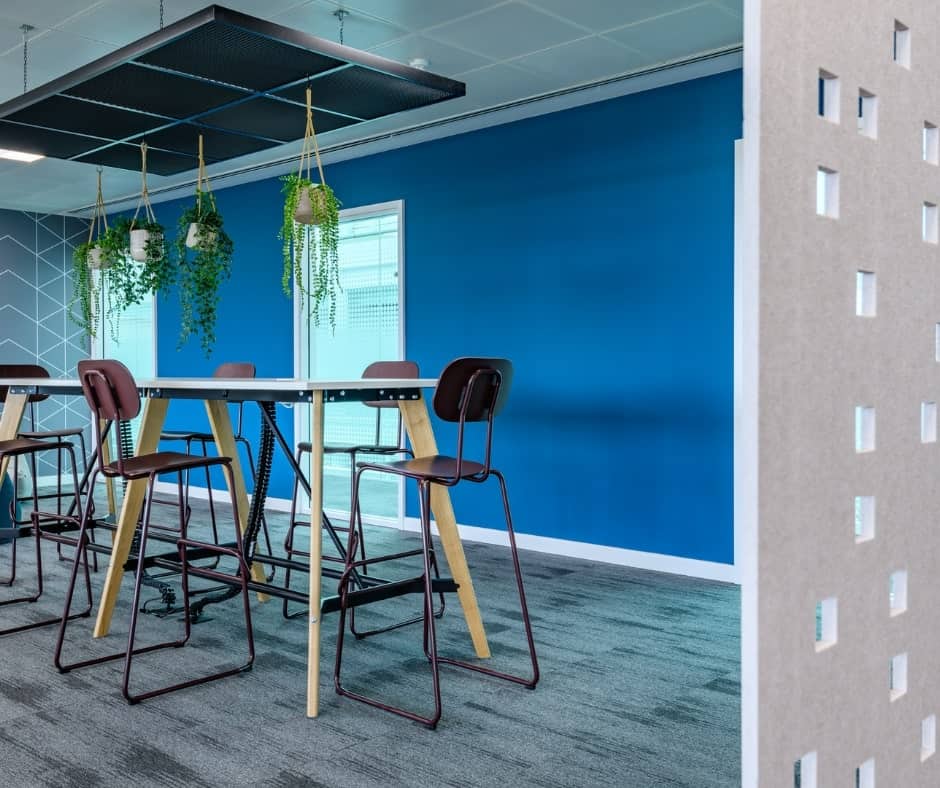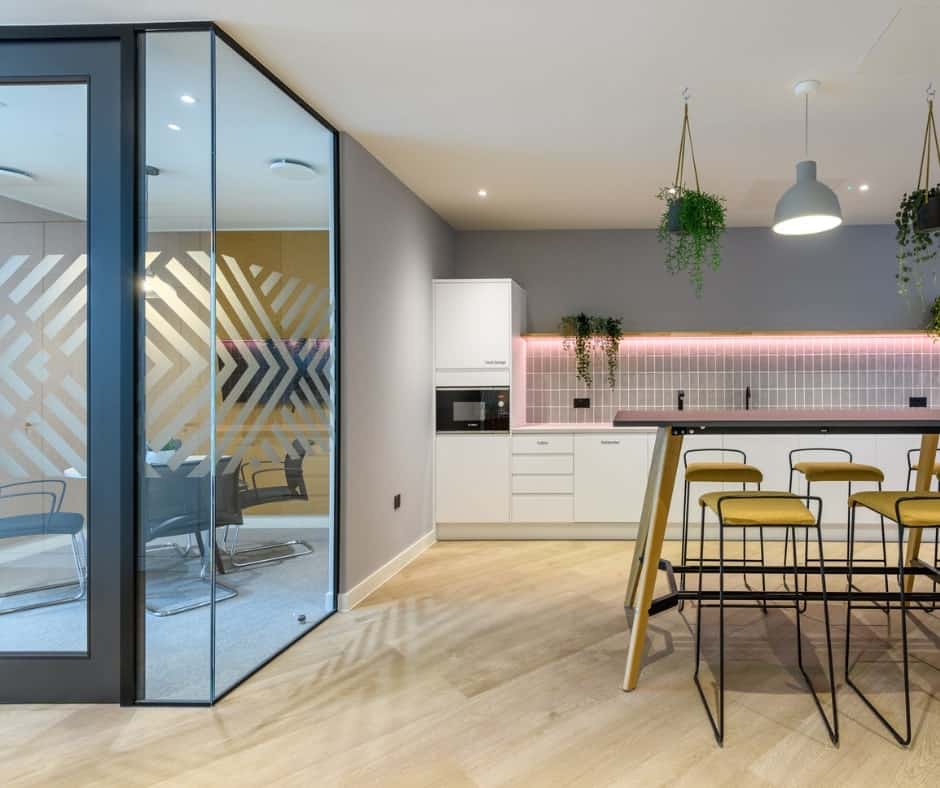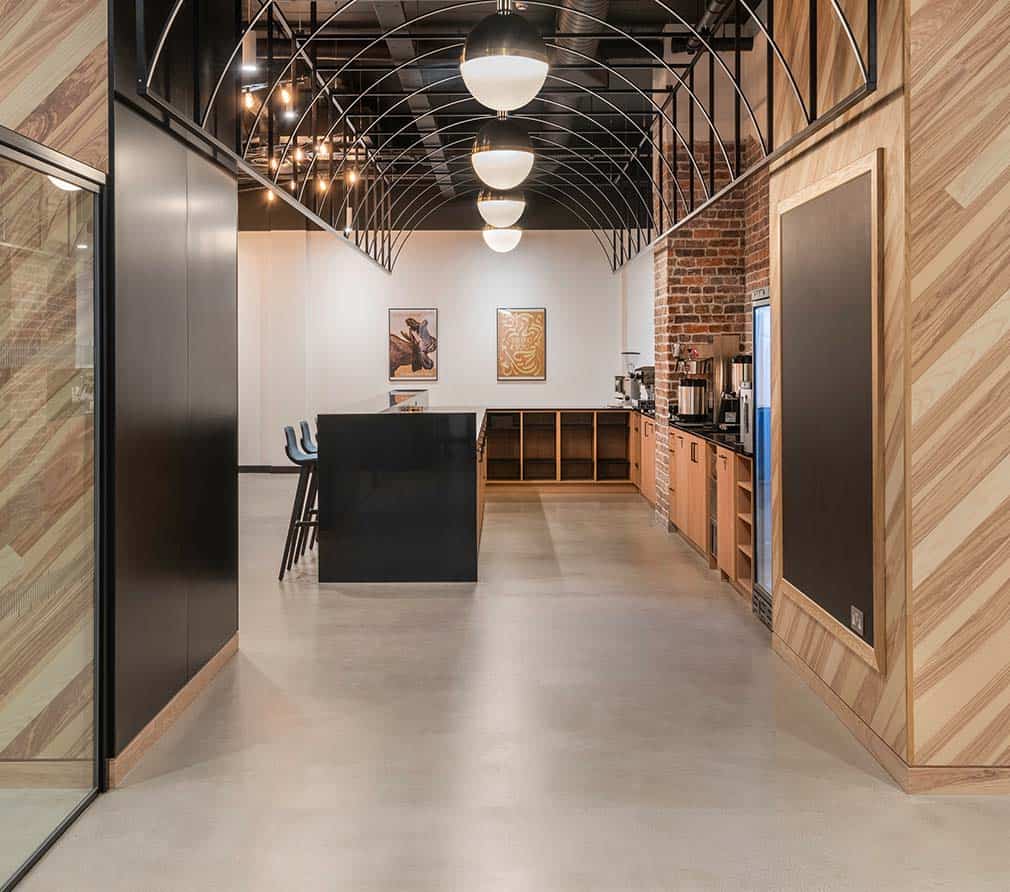“The pandemic has forced the adoption of new ways of working. Organizations must reimagine their work and the role of offices in creating safe, productive, and enjoyable jobs and lives for employees.” – McKinsey
The office has changed. What we expect from the spaces where we meet clients, collaborate with colleagues and go about our businesses is not the same today as it was 4 years ago. The role the office plays in the lives of many of us has also changed.
Remote and hybrid working is now the norm in offices up and down the country. Forbes reports that by 2025 in the USA, around 7 in 10 people are expected to work remotely at least five days per month. In the UK, 84% of employers now have hybrid work options and the majority don’t dictate how many days per week should be spent in the office.
Pre-Covid, having a chunk of prime real estate in a bustling metropolis was considered an essential for productivity and by extension, success. A hive of activity with worker bees streaming in each morning and leaving each evening, with the business of work conducted entirely at a designated desk. Today, the world has moved on, bruised by a pandemic but more enlightened too, with organisations now confident that working remotely doesn’t impact on productivity as once feared, and teams able to achieve a better work life balance by opting out of the workday commute a few days per week are happier, more engaged and more easily retained, too.
The role of the office however hasn’t been diminished by the new freedom and flexibility that hybrid work offers. If anything, the importance of the office has taken on new urgency and it’s now more important than ever before.
It needs to be a space that those no longer required to attend daily wish to visit. With diffused teams, the office is no longer the hive but the mothership, connecting and communicating brand values and cultures across multiple locations.
It’s a space that must inject everyone, both those working remotely and in-person, with the energy needed to do their job.
There are also fears that people are becoming harder to reach, meaning that the office must be a welcoming, comfortable and inclusive space.
In some industries, image is everything. The corporate HQ is a status symbol but more than that, it shows the capability of the business, brings its culture and its talent to life. The modern office also needs to reflect that, with a wow factor that can help to recruit the brightest new talent and impress the most prestigious new clients.
2023 is an exciting time for office design. It’s a chance to go back to the drawing board and reimagine what an office can be, the role it plays and the importance of the space to our health and wellbeing.
Trend 1: Development in the heart of the office
While some firms have seized the hybrid work model as an opportunity to downsize their spaces, others have ramped up their understanding of what the office can be and developed super-sized new offices that bring disparate departments that would once be far removed from the corporate HQ right into the heart of the office.
Tech companies Facebook, Amazon and Google have all invested in huge new HQs in the last year, recognising their need for space but also understanding that they can use that bigger surface area differently.
This is an exciting, interesting trend as we’re increasingly seeing experiential aspects being folded into the standard office experience. This is an approach that can be embraced by many different sectors. Cosmetics companies, furniture manufacturers and fashion designers for example could include a laboratory within the walls of the office where staff can see their products actually being created.
Retailers too can tap into this trend, with shop mock ups recreated in HQ to show how products may look on the high street.
A particularly future-forward example of this trend in action can be seen in some offices across America and Asia where office space isn’t used for desks but to create ecommerce rooms. These are spaces where you walk in and are immersed as if you were inside the company website.
Trend 2: Acoustics
For many people, the office is a social space. With teams now able to come and go more freely and pass days or weeks without coming into the office, a visit is a chance to catch up with colleagues. The downside of this is increased noise levels and a greater potential for disruption.
Driven by this, acoustics is rapidly becoming a core consideration for new office design. As a place of business, it’s vital that spaces are created which are conducive to work. When planning an office layout, this means paying increasing attention to acoustics and the flow of sound around a space. Acoustics are especially key in offices where space is set aside for focused work, for collaboration and for hybrid or remote worker hot desks. The way sound moves around the space should help to determine where those zones are located, so someone’s permanent desk isn’t impacted by noise levels from collaborative areas.
Trend 3: Neurodiversity
Neurodiversity is closely linked to acoustics but it’s also fundamental to creating an inclusive culture and diversity. In 2023, we’re hearing this term used more and more in the context of office design, with designers and architects beginning to consider how the workplace functions for those with hidden conditions such as ADHD or dyslexia.
Neurodiversity in design considers the sensory responses of building users to create a more inclusive space considerate of the health and wellbeing of all.
Neurodiversity in design considers acoustics and sensory factors to understand where people feel comfortable and able to work. Someone with ADHD for example may find it hard to focus and be productive if they’re close to a high traffic area and lots of background noise. Likewise, someone with dyslexia will find it easier to carry out their role with the right lighting conditions.
Trend 4: Sustainability
Sustainability is a word that we’re all used to hearing and it’s something that many of us practise in our lives away from work, when choosing to recycle for example or searching for greener alternatives of our favourite products.
In office design and construction, sustainability is both a challenge and an opportunity.
For those creating brand new office spaces, dedicated schemes such as BREEAM are now available to aid in the creation of the most environmentally friendly workspace possible.
Retrofitting existing workplaces are also now considering sustainability and the environment at a much more granular level, with innovative new approaches to lower the building’s footprint both during retrofit and when handed over to building users. We’re seeing many different practises, initiatives and policies emerging in this area, from placing geographical limits on the sourcing of materials to using recyclable, traceable or low emission materials and borrowing from nature where possible.
That could mean finding ways to use rainwater to flush toilets or water green areas, to maximising natural lighting and ventilation, repurposing furniture or donating unused furniture to not for profit organisations who can give it a new lease of life. One of the ways we’re doing that here at SPACE is by donating unwanted office furniture to a charity in Africa, where it is placed in schools.
Trend 5: Touchless technology
The pandemic drummed into us the importance of having highly sanitised surfaces and minimising touch where possible so it’s perhaps no surprise that in the wake of the pandemic, non-touch technology is trending.
Many of us are used to using voice assistants such as Alexa at home to turn our speakers up and down and perform similar tasks. We’re now seeing this translated into the office, but on a much larger scale. Voice-activated lifts and toilets, keyless entrance to buildings and other floors, robot cleaners and delivery systems and touchless sign-in for employees and visitors.
Some offices have embraced touchless tech as a way to create “virus proof” break rooms, with coffee machines and vending machines that can be operated by QR code or app.
Google, forever experimental in office design, takes this a step further and integrates touchless tech as a means of improving the hybrid work model via Google Campfire meeting rooms. This novel idea sees in-person meeting attendees to sit in a circle between large screens which also face inwards. Those dialling into the meeting from a remote location appear one per screen, so they sit facing their colleagues, giving them the same perspective as those in the office.
Trend 6: Flexible furniture for flexible spaces
The way that furniture is used is also changing, with a clear move towards more flexible, modular designs which allow different spaces to be created on demand.
During an average work week, especially in communal areas, you may have small working pods for example but as the evening or weekend dawns, those pods can be pushed back to create a more functional event space.
With not everyone in the office every day, this flexible functionality means the space can be transformed to perform another function. For organisations that need to wow clients, to meet face-to-face or regularly hold events, the ability to push furniture away and free up useable space means there is less reliance on external venues. Instead, the organisation’s own office can invite guests, become a space to socialise or enable the building to be used in a community way.
Google is an early adopter of this trend too, with plans for its offices described as “Ikea meets Lego” with pods filled with furniture on wheels that can be reconfigured or pushed away as needed.
If you’d like to speak to us about adopting these trends, or rethinking your office in 2023, get in touch today.








